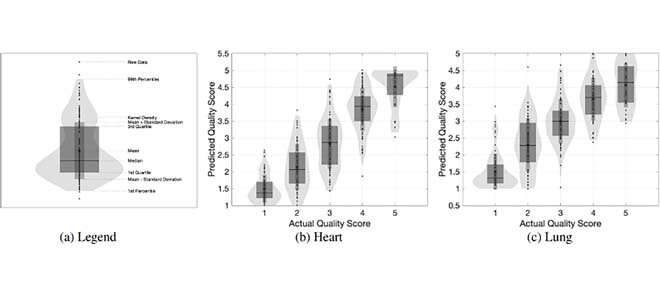

Researchers at Monash University have developed new software which delivers advanced sound quality of heart and lung monitoring for preterm and full term babies, and can be used by parents at home.
The software, used in conjunction with digital stethoscopes, delivers state-of-the-art screening and monitoring capability and more accurate diagnosis of respiratory issues in our most vulnerable babies and children.
It can be used in hospitals or at home and offers better diagnosis and real-time monitoring for babies. This is also of particular value in low to middle-income countries where health resources may be limited.
“Respiratory issues are common in preterm babies. The software we’ve created removes all of the surrounding noise from chest recordings so the heart and lung sound are separated and very clean. This enables doctors and nurses to listen to them very clearly without interference and better diagnose any potential issues,” says Dr. Faezah Marzbanrad from the Monash University Department of Electrical and Computer Systems Engineering.
“The software is very easy to use, whether you are a doctor in a hospital setting or a parent in the middle of the night worried about a baby. A parent can record their baby’s chest sound and send it to a doctor for real-time analysis,” says Dr. Marzbanrad.
According to UNICEF, the neonatal period is the most vulnerable time for a baby’s survival with 1.7% of live births resulting in mortality. Stethoscope-recorded chest sounds contain important cardiac and respiratory information that informs clinicians on the health status of newborn babies. This crucial information can enable timely assessment for signs of serious health risks, potentially improving neonatal survival and reducing long-term morbidity risks.
However, low quality chest sounds due to noise from the external environment, other internal body sounds, or the device itself, can hinder the use of conventional or digital stethoscopes and complicate monitoring and diagnosis, or worse—can lead to misdiagnosis.
Dr. Marzbanrad, Ph.D. student Ethan Grooby and a team of researchers from the Monash University Faculty of Engineering in collaboration with the Department of Paediatrics, School of Clinical Sciences, Monash University and Monash Children’s Hospital, have examined the chest sounds of 119 preterm and full term babies to assess the effect of signal quality on vital sign estimation. Their research found that increasing the quality of the signal recorded, leads to a reduction in vital sign error.
“Chest sounds in newborn babies are very difficult to assess and interpret especially in preterm and/or sick babies,” says Associate Professor Atul Malhotra, Senior Neonatologist and Head of Early Neurodevelopment Clinic at Monash Children’s Hospital.
“There are many reasons; small chest size, fast breathing rate and heart rate, additional sounds of NICU equipment. We rely a lot on chest X-rays and invasive blood gas monitoring to indicate and monitor cardio-respiratory illness in babies. This software gives us much better resolution to interpret, assess and monitor newborn illness.”
When used in a home setting, the software automatically gives the parent a score on the quality of the chest sound they have recorded, so they will know whether it is good enough for the doctor to analyze or they need to reposition the digital stethoscope and collect another sample.
Dr. Marzbanrad, who was recently awarded a veski Victoria Fellowship to further her work developing telehealth technology to improve maternal, fetal and neonatal health in rural and remote regions, says this is particularly useful in rural or remote settings or if parents want to keep their baby at home and monitor them.
“They can put their digital stethoscope to a newborn’s chest and collect sound. It can be very specialized placement on the back or chest to get the sound that is needed by a doctor, so the software will guide them to the right location.”
Source: Read Full Article